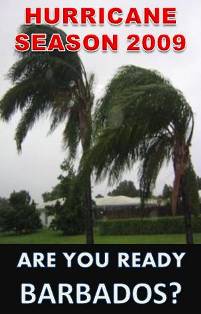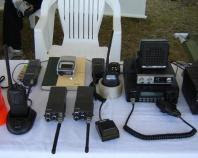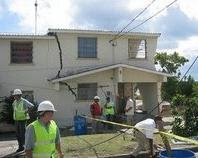One year after Hurricane Dolly struck South Texas and became the Rio Grande Valley's most destructive storm in four decades, the tropics are decidedly quieter.
In fact the Atlantic basin has not gone this deep into hurricane season without a named storm in five years.
Add to that a maturing El Niño in the Pacific Ocean, which creates more wind shear over the Atlantic tropics and tends to depress storm activity by 20 to 40 percent, and the outlook for the rest of the 2009 season looks downright rosy.
But don't get too cocky, forecasters say.
Although the first Atlantic named storm typically forms by July 10, the real activity doesn't usually begin until August, and a lull in early season activity doesn't necessarily presage a weak overall season.
The 2004 season, for example, didn't see its first storm until Hurricane Alex began developing on July 31.
Yet after Alex the season rapidly ramped up, finishing with 15 storms and 6 major hurricanes, including Hurricane Ivan. A storm the size of Texas, Ivan was one of the 10 most intense hurricanes ever in the Atlantic basin before striking Gulf Shores, Ala., and causing $19 billion in damage.
El Niños'intensity
And while El Niños may suppress overall activity, such years can still produce savage storms. One of the three most-intense storms at a U.S. landfall, Hurricane Andrew, developed during an El Niño in 1992.
So have some of the most famed storms ever to strike Texas and Louisiana: Alicia (1983), Betsy (1965) and the great storm of 1900, which came during a severe El Niño, said Jill Hasling, president of Houston's Weather Research Center.
“There might be fewer storms during an El Niño,” she said. “But it only takes one.”
During an average Atlantic season, 10 tropical storms or hurricanes develop, but since 1995 the Atlantic has seen an upswing in activity that most scientists attribute to a long-term natural pattern.
Given this season's slow start and the onset of El Niño, most seasonal forecasters now say about 10 named storms will form, one of the lowest totals of the past 15 years.
Hostile July for storms
The official beginning of hurricane season came on June 1, but recent years have seen storms form in May.
This happens when frontal boundaries drift south into the Gulf of Mexico or off the East Coast, producing lingering areas of thunderstorms that sometimes spin into tropical storms, said Chris Hebert, lead hurricane meteorologist at ImpactWeather, a private Houston-based forecasting company.
That almost happened this year.
“We did have a few such features in May and June,” he said. “One made it to tropical depression strength, but none made it to tropical storm strength. So it was pretty close in May and June.”
But as often happens in July — and certainly what has happened this year, with all the heat — high pressure builds across the Gulf and Southeastern United States, reducing the chances of development near the United States.
July storms often form in the Caribbean at this time of year, but wind shear and other factors there have combined to create hostile conditions for storms, Hebert said.
The Bermuda High
Looking later into the season, Hebert says a semi-permanent feature called the Bermuda High, a large area of high pressure just north of the tropics, may be quite strong this year.
This would limit development in the deep tropics.
Perhaps, then, as hurricane season progresses storms will be most likely to develop closer to land in the Caribbean Sea or Gulf of Mexico, he said.
In fact, Hebert and other forecasters say such a possibility should concern emergency management experts because these storms give little warning.
Hurricane Alicia may have been bad, spinning up from a tropical depression on Aug. 15, 1983, into a Category 3 hurricane just two days later before striking Galveston, but there are worse precedents during an El Niño year.
Specifically, there's the largely forgotten Texas hurricane of 1932. That storm formed on Aug. 11 in the Gulf near the Yucatan Peninsula.
A day and a half later, a Category 4 hurricane, with 145-mph winds, slammed into Freeport.
Source: www.chron.com
 The first tropical storm of the 2009 Atlantic Hurricane Season has formed and could impact on several islands in the north-east Caribbean by early next week.
The first tropical storm of the 2009 Atlantic Hurricane Season has formed and could impact on several islands in the north-east Caribbean by early next week.









